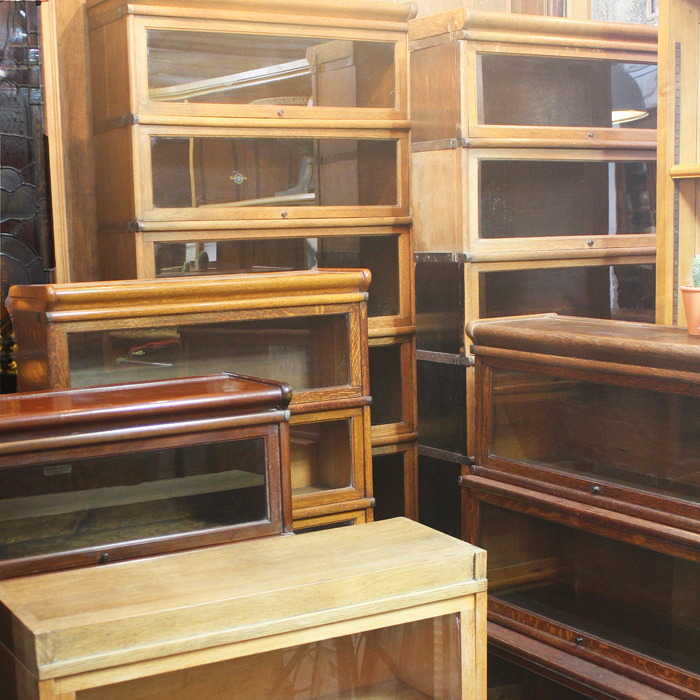Golden Globes: Oscar winners
At LASSCO Three Pigeons we’ve had all kinds of fun this month salvaging “sectional bookcases” from the library of a Surrey-based Architectural Historian. Over the years, his library had got so out of control that the light-switch could only be reached by threading a broomstick through one of the many teetering mountains of architectural tomes. We were pleased to salvage an impressive and varied selection of his “Globe Wernicke” bookcases as he radically re-formats.

The deft Globe Wernicke modular design was conceived in Michigan in the 1890’s. By Edwardian times the design was being made in London, Paris and elsewhere and was selling worldwide for decades thereafter – even in Mexico.
It happens that Globe Wernicke bookcases feature in one of the front-running contenders for numerous Oscars this weekend; in “Roma”, an extraordinary and beautifully shot film, director Alfonso Cuarón bookends his movie with exactly the same Globe Wernicke bookcases as those we have just acquired – and they are integral to one of the main themes of the film.

Cuarón’s film is a semi-autobiographical account of the suburban life of a family in the “Roma” district of Mexico City at the turn of 1970-71. It follows Cleo, one of two maids embedded into the lives of the raucous family of six. In one way or another, each of the characters of the film are contained, constrained, into boxes. The family house is box-like, the only view is up – to a square of sky; the view through the geometric windows is largely obscured. The dog is locked in a tiled cuboid driveway and is continually trying to break out; caged birds fill the courtyard. The maids live in a small box-room in an out-building. Even the car, a Ford Galaxy, is diligently slotted in to the tight driveway by the seldom-seen father of the family, who we soon learn is at the point of breaking-out from the constraints of his suburban existence and leaving for a wild affair downtown.
The first tracking shot of the movie (pictured above) follows Cleo, through the airy grid-like interior of the ground floor of the house – and there are the glazed boxed containers of numerous Globe Wernicke bookcases. Everything that the family knows or has read is boxed-up in these glazed cases dotted throughout the house and throughout the film.
The family, with Cleo, do venture out into nature and encounter powerful wild forces that threaten to overwhelm them – be it earthquake, forest fire or rip-tide. When venturing downtown they encounter riot and tumult. They repeatedly return to the order of their contained world.
While they are away for the last time, the absent father extracts his belongings and in the final scene the family return to find all the Globe Wernicke bookcases have been removed – the books are freed and left stacked on the ground. It is a symbolic moment as Cleo and the family move forward into their newly formatted existence without paternal constraints.

“Without the bookshelves it’s awful” gasps the eldest son on their return,
“What’s awful Mommy?” asks his sister.
“He misses the bookshelves” she replies. And the film then ends as Cleo is followed out of the door and climbs the fire-escape in the courtyard – up to the sunlit square of sky.
Freed of his bookcases we wonder if our Architectural Historian friend has just had a similar transcendental experience.
“Roma” directed by Alfonso Cuarón is a Netflix film and is nominated for 10 Oscars this weekend – look out for the bookcases.
The Globe Wernicke bookcases at LASSCO – and other sectional bookcases salvaged from the Surrey library – are catalogued here detailing the history of the Globe Wernicke company.

